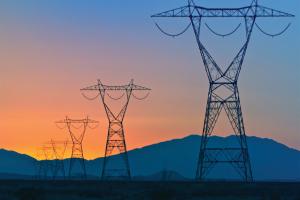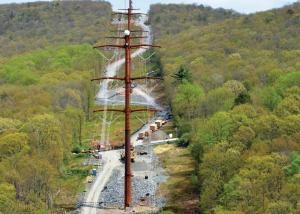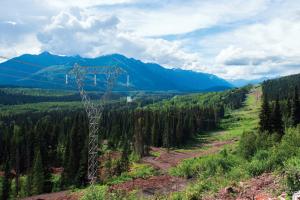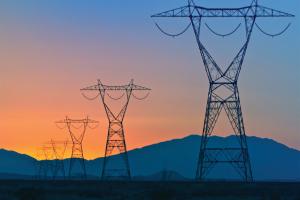Letter to the Editor: A response to the article by Steve Huntoon in our September 2015 issue
Michael Beehler, Vice President, Burns & McDonnell
Is "Big Transmission" really "going nowhere", as Steve Huntoon suggests in his thought-provoking September 2015 article, The Rise and Fall of Big Transmission?

Though the answer depends on your perspective and how you define "Big Transmission," this welcomed debate may become more vocal in the months and years to come. Mr. Huntoon defines Big Transmission simply as long spans of ultra-high voltage line and suggests that "alternatives may make more sense". Our experience on projects in the 150- to 200-mile range could be categorized as Big Transmission because of the range of facility improvements - and substantial capital investment - they spurred throughout the entire regional grid.
In 2012, I wrote a paper entitled Megatrends for T&D which identified five key drivers of transition within the T&D industry. One of those drivers, or megatrends if you will, is the ongoing need to maximize use of existing transmission rights-of-way using underground and advanced technologies. In 2016, I stand by these megatrends. Accordingly, Burns & McDonnell is neutral in the debate on "big" versus "incremental" transmission improvements.
There are occasions when "big transmission" makes economic sense and other situations when incremental improvements are most prudent. As one who understands, and can advocate for both sides of this issue, I would suggest that public/regulatory policy, economic viability and the non-negotiable need to sustain near-100-percent system reliability could soon push North America and the world into building more "big transmission."
Public/regulatory policy is pushing the industry toward renewables primarily as an answer to climate change. This is perhaps the largest driver of Big Transmission today. Mr. Huntoon certainly is correct that electricity follows the path of least resistance within the power grid, so Big Transmission projects cannot be planned and designed in a vacuum. Reinforcement of the entire network is part of the drill with any mega-scale, long-line project. From major projects planned by companies like CleanLine Energy to deliver wind energy from plains states to eastern load centers to the major transmission initiatives to help California achieve a 50-percent renewable portfolio standard (RPS), big, efficient and economical transmission lines will be needed to make these ambitious climate-related policies a reality.
 The 146-mile Susquehanna / Roseland Project in New Jersey and Pennsylvania was mandated by PJM as a necessary step to upgrade an 80-year-old line operating at 230 kV from the Susquehanna station in Berwick, Pa., to PSE&G’s Roseland switching station in Roseland, NJ. This Big Transmission project crossed challenging terrain and sensitive environmental zones and included a range of system fixes that has stabilized the regional grid.
The 146-mile Susquehanna / Roseland Project in New Jersey and Pennsylvania was mandated by PJM as a necessary step to upgrade an 80-year-old line operating at 230 kV from the Susquehanna station in Berwick, Pa., to PSE&G’s Roseland switching station in Roseland, NJ. This Big Transmission project crossed challenging terrain and sensitive environmental zones and included a range of system fixes that has stabilized the regional grid.
In California for example, the major 500kV transmission that was recently built to deliver wind and solar energy to load in Southern California is fully subscribed. In late July of 2015, the Chairman of the California Energy Commission and the President of the California Public Utilities Commission wrote to the Chairman of the California Independent System Operator describing the need and the opportunities for "inevitable" new transmission in California and neighboring western states. These leaders stated the need to start with policy recommendations by 2016 in order to meet RPS goals by 2030 as currently mandated by law. Climate change initiatives and an RPS in most states almost certainly will require Big Transmission projects in the future.
Economics drives business in North America and the world. Long distance transmission has always been and will remain a viable and competitive alternative for power delivery when considering fuel source and location, production and delivery efficiencies and energy density.
Historically, power plants were located by design near fuel sources like coal mines or major dams or away from population centers in the case of nuclear facilities. Today, natural gas creates many opportunities for onsite power production with combined heat and power facilities. Gas is also the fuel of choice for replacement of older coal/gas plants that cannot be economically upgraded to meet mandated air quality improvements.
Regardless of the fuel choice and location, a total life cycle cost (TOTEX) of the generation and transmission asset must be conducted. The TOTEX analysis of capital and operating cost of the assets will include financing, capex, O&M, unit efficiency and line losses. In the future, this analysis may also need to factor the cost of carbon and other costs such as resiliency (i.e. the ability to quickly recover from high impact, low probability event with little or no system impact).
 The Northwest Transmission Line in British Columbia is another example of a Big Transmission project that has proven to be a powerful economic engine within a broad region. The 213-mile, 287-kV power line has opened up a rich mining region in northern British Columbia while enabling new sources of renewable power to be connected to the grid.
The Northwest Transmission Line in British Columbia is another example of a Big Transmission project that has proven to be a powerful economic engine within a broad region. The 213-mile, 287-kV power line has opened up a rich mining region in northern British Columbia while enabling new sources of renewable power to be connected to the grid.
Unquestionably, Big Transmission will have its place. When BC Hydro built its 344-km 287kV Northwest Transmission Line to serve remote mining loads in northwest British Columbia, the TOTEX of the transmission asset resulted in larger structures carrying larger conductors with lower electrical line losses. Economically efficient power production and transmission remains foundational to a strong and vibrant economy.
In the 20th century, electricity competed with alternate sources of generation delivered over a robust transmission (and distribution) system. In the 21st century, electricity still must compete against alternate and distributed sources of generation that now include historically low natural gas prices and policies and improving technologies that will eventually lead to self-generation and viable energy storage.
System reliability is taken for granted in the United States. The undeveloped world lives with regular brownouts and the subsequent impacts to the safety, health and welfare of the populace. Here in North America, we have been fortunate to have the foresight and resources to build a robust and highly reliable transmission system. It has served us well and allowed many technical and policy related "experiments" to be successfully conducted with little or no public impact.
Aside from the events in 1965 and 2003, major outages have been few and far between. However, our transmission system is not immortal. It has a life span and, in many cases, that life span has been far exceeded. Big Transmission lines delivering high voltage electricity to major loads and load centers must be periodically upgraded or replaced in order to maintain the high levels of system reliability that our country and the economy relies on.
 San Diego Gas & Electric’s 117-mile 230/500 kV Sunrise PowerLink project was prompted by California’s mandate to increase the percentage of renewable energy used by consumers. Built at a cost of $1.9 billion, it was energized in 2012 and is bringing 1000 megawatts of renewable energy from the Imperial Valley to San Diego County.
San Diego Gas & Electric’s 117-mile 230/500 kV Sunrise PowerLink project was prompted by California’s mandate to increase the percentage of renewable energy used by consumers. Built at a cost of $1.9 billion, it was energized in 2012 and is bringing 1000 megawatts of renewable energy from the Imperial Valley to San Diego County.
Needless to say, these are big challenges brought into sharper focus during recent polar vortices that caused unprecedented demand on aging systems. Opportunities for line outages to safely perform needed line maintenance and repair on aging systems disappear during these periods of seasonal record demand.
Public Service Electric & Gas and its neighbor PPL met these challenges head on with the recent energizing of the 146-mile Susquehanna to Roseland 500kV transmission project, a PJM reliability project that augmented some 80-year-old 230kV transmission assets.
The debate over Big Transmission will continue. In fact, Steve Huntoon and I will be part of that debate during a panel discussion on this topic at the EEI T&D & Metering meeting on April 13th in New Orleans. For those who can't attend upcoming conferences, there are plenty of resources available to gain further insight on this topic. One I can recommend is an excellent report commissioned by WIRES entitled Market Resource Alternatives; An Examination of the New Technologies in the Electric Transmission Planning Process.
The T&D industry is hard at work meeting new challenges created by the transition to cleaner energy and even greater system reliability. Big Transmission will be an important part of the solution as we work to meet these challenges.
Your strong opinions are most welcome. Send them to mitnick@fortnightly.com. We'll publish the best. Letters typically range from 200 - 700 words but can be lengthier.


